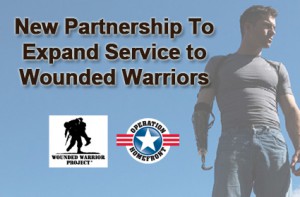The National Organization on Disability is calling on the Defense Department and other agencies to take note and adopt its approach to helping severely wounded warriors get back to work.
Tracking records indicate 70 percent of its seriously wounded warrior participants are experiencing employment and educational success due to its four-year Wounded Warrior Career Program–and this has federal officials paying attention. Based on research statistics, the Wounded Warrior Career Program shows a successful placement rate at about twice the rate of veterans who are not in the program.
The findings of the study stem from the organization’s Wounded Warrior Career program, which has had about 275 wounded veterans under its tutelage since the program became active in 2008 at the Army’s suggestion.
Candidates in the program often have severe cases of post-traumatic stress disorder and traumatic brain injuries. Of those 275 wounded warriors, the organization says the 70 percent represents those who are employed, in training or enrolled in other forms of education.
Organization representatives said veterans not in their Wounded Warrior Careers program have a comparative job rate of about 30 to 40 percent.
Essentially, the organization demonstrates new employment practices, evaluates results and shares approaches for widespread use. Research on disability employment issues also is conducted, and it includes widely used polls on employment trends and the quality of life for people with disabilities. Experts in disability and employment provide consultation to employers who want to hire people with disabilities because they bring unique talents to the work force.
The organization works with employers, schools, the military, service providers, researchers and disability advocates. Protype start-ups are currently conducted in three states with high concentrations of veterans — Colorado, Texas and North Carolina. The program covers career planning, career preparation, job-seeking support and post-placement support.
The organization’s representatives are scheduled to meet with congressional and Defense officials, Departments of Labor and Veterans Affairs and others on a national level to adapt its “proven, cost-effective” model that successfully places severely wounded veterans into the civilian workforce.

